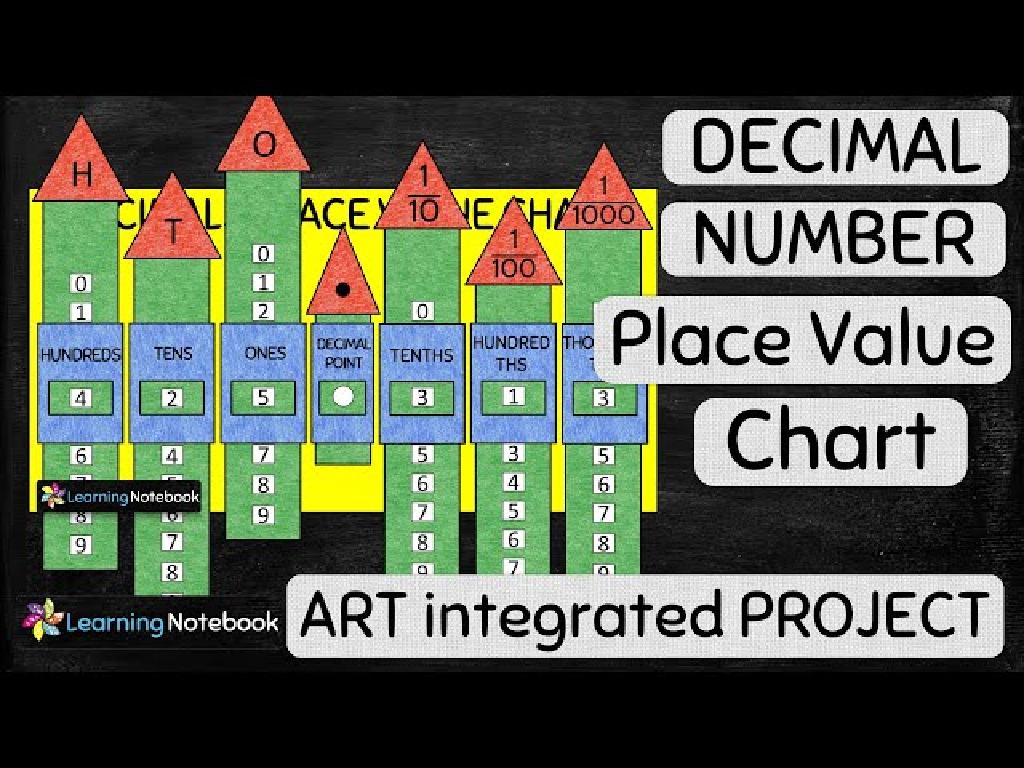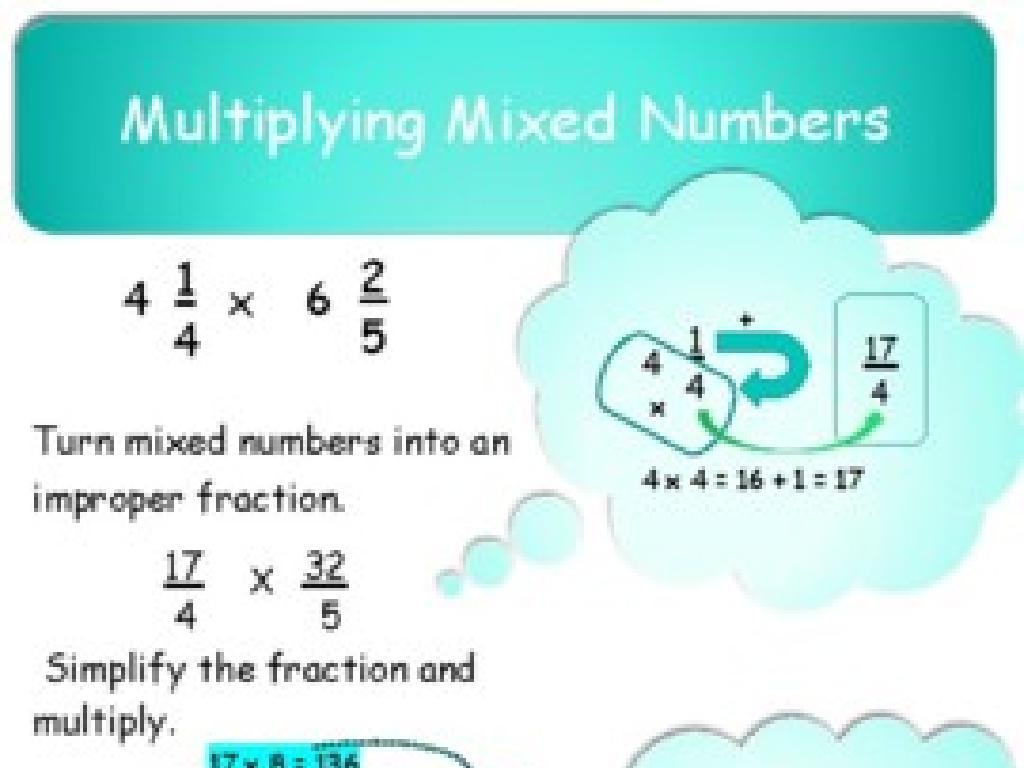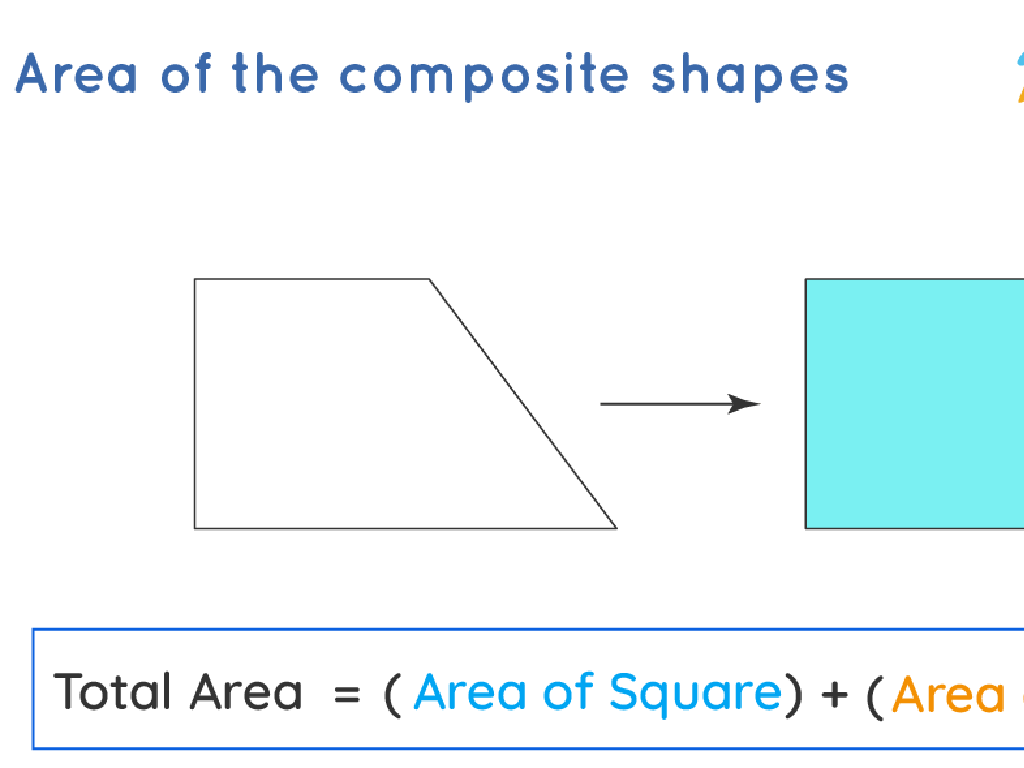Classify Solids And Liquids
Subject: Science
Grade: First grade
Topic: States Of Matter
Please LOG IN to download the presentation. Access is available to registered users only.
View More Content
Matter Detectives: Solids and Liquids
– What are States of Matter?
– Matter is everything around us, like water and rocks.
– Exploring Solids
– Solids are hard and keep their shape, like a brick.
– Discovering Liquids
– Liquids flow and take the shape of their container, like water.
– Become a Matter Detective
|
This slide introduces the concept of States of Matter to first graders, focusing on solids and liquids. Begin by explaining that matter is everything that takes up space and can be touched. Use tangible examples like toys (solids) and drinks (liquids) to illustrate the concepts. Emphasize the properties of solids maintaining their shape and liquids taking the shape of their containers. Encourage the students to look around and identify objects in the classroom that are solids or liquids. This activity will engage them in a fun and interactive way to become ‘Matter Detectives’ and will set the foundation for understanding the basic states of matter.
Exploring Matter: Solids and Liquids
– Matter makes up everything
– Matter is what stuff around us is made of
– Matter comes in forms: solid, liquid, gas
– Solids hold shape, liquids flow
– Today’s focus: solids and liquids
– We’ll learn how to tell solids and liquids apart
– Understanding solids and liquids
|
This slide introduces the concept of matter to first graders, emphasizing that everything around them is made of matter. It simplifies the concept by focusing on the tangible forms of matter they interact with daily: solids and liquids. Solids are explained as items that keep their shape, like rocks or toys, while liquids are things that can flow, like water or juice. The slide sets the stage for activities that will help students identify and classify objects in their environment as solids or liquids, reinforcing their understanding through practical examples and hands-on learning.
Exploring Solids in Science
– Solids have their own shape
– Solids do not flow like liquids
– Examples of solids
– Wood, stone, ice-cream (before it melts!)
– Solids around us
– Find solid objects in the classroom
|
This slide introduces the characteristics of solids to first-grade students. Begin by explaining that solids are one of the states of matter and they have their own shape, unlike liquids or gases. Emphasize that solids do not flow like liquids, which means they stay put and don’t pour or spill. Use tangible examples like wood, stone, and ice-cream to help students visualize and understand the concept. Encourage the students to look around the classroom or their homes to find and identify solid objects, reinforcing their understanding of the characteristics of solids.
Exploring Liquids
– Liquids shape to containers
– Like water in a cup or a bottle
– Liquids can flow easily
– Watch water pour from a jug
– Examples: Water, Milk, Juice
– Common liquids we drink
|
This slide introduces the characteristics of liquids to first graders. Start by explaining that liquids don’t have their own shape; instead, they change shape to fit the space they’re in, like water in a cup or a bottle. Demonstrate how liquids can flow by pouring water from one container to another, showing that liquids can move from place to place. Provide relatable examples such as water, milk, and juice, which are familiar to the students from their daily lives. Encourage the students to think of other liquids they know and how those liquids behave in different containers. This will help them understand the concept of liquids taking the shape of their container and being able to flow.
Let’s Classify: Solids vs. Liquids
– Observing different objects
– Deciding if they are solids or liquids
– Thinking about shape
– Solids keep their shape, like a rock or a book
– Considering how they flow
– Liquids change shape and flow, like water or milk
|
This slide is aimed at helping first graders understand the basic differences between solids and liquids. Start by showing a variety of objects and ask the class to observe and describe them. Guide the students to think about whether the object keeps its shape or if it flows and changes shape. Explain that solids are objects that maintain their shape regardless of where they are, like a pencil or a block. In contrast, liquids take the shape of their container, like juice in a cup or soup in a bowl. Encourage the students to touch and interact with safe solid and liquid objects to reinforce the concept. The goal is to help them classify objects in their environment as either solids or liquids based on these properties.
Activity Time: Solid or Liquid?
– Receive a worksheet with object pictures
– Circle solids, underline liquids
– Think about what makes them solid or liquid
– Solids keep their shape; liquids flow
– Share findings with the class
|
This activity is designed to help first graders distinguish between solids and liquids by visual examination. Provide each student with a worksheet that has a variety of objects depicted. Explain that solids are objects that maintain their own shape without a container, while liquids take the shape of their container. Encourage students to carefully consider each object before deciding if it’s a solid or a liquid. After completing the worksheet, facilitate a discussion where students can share their answers and reasoning with the class. This will help reinforce their understanding of the states of matter and allow them to learn from each other’s observations.
Class Experiment: Melting Ice
– Observe ice turning to water
– Notice changes in shape and flow
– Ice has a fixed shape, but water flows
– Discuss why ice melts
– Heat makes ice melt into water
– Learn about solids and liquids
|
This class experiment is designed to help first graders understand the concept of states of matter, specifically the transition from solid to liquid. By observing ice melting, students will see firsthand how a solid can change into a liquid when it is heated. They should notice that ice has a definite shape, whereas water can take the shape of its container, demonstrating the property of flow in liquids. Discuss with the students that the warmth in the room or from their hands provides energy (heat) that causes the ice to melt. This experiment serves as a practical demonstration of the properties of solids and liquids and the effect of temperature on them. Prepare a safe setup for each student or group to observe melting ice, and ensure to guide them through the process, asking probing questions to facilitate understanding.
Matter Detectives: Solids vs. Liquids
– Congratulations, Matter Detectives!
– We learned about solids and liquids
– Solids keep their own shape
– Like blocks or a piece of wood
– Liquids flow to fit their container
– Like water or milk in a cup
|
Well done to all the students for their hard work and curiosity as Matter Detectives! Today, we’ve explored the differences between solids and liquids. Solids are firm and maintain their shape regardless of where they are, like the blocks we played with or the desks we sit at. Liquids, on the other hand, are fluid and change shape to fit inside whatever container they’re in, just like when we poured water into different shaped containers and observed how it took the shape of each one. Remember these key points as they are fundamental concepts in understanding the states of matter. Encourage the students to observe objects at home and classify them as solids or liquids to reinforce their learning.
Class Activity: Mystery Bag Exploration
– Reach into the Mystery Bag
– Feel and classify the object
– Use your sense of touch
– Is it a solid or a liquid?
– Solids are hard; liquids flow
– Discuss your reasoning
– Share why you think it’s solid or liquid
|
This activity is designed to engage students in a tactile exploration of solids and liquids. Prepare a bag with various objects (e.g., a rock, a sponge, water in a sealed bag) and have each student reach in to feel one object without looking. They will use their sense of touch to determine if the object is a solid or a liquid and then explain their reasoning to the class. This will help them understand the properties of solids and liquids in a hands-on way. For the discussion, guide them to articulate that solids have a definite shape and do not flow, while liquids take the shape of their container and can flow. This activity will reinforce their understanding of the states of matter through direct experience and peer learning.





